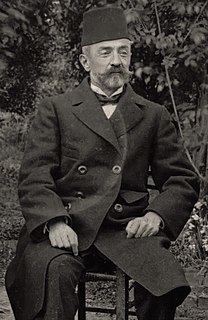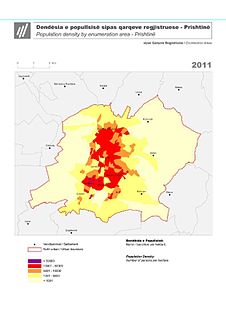
The Congress of Lushnjë, historically documented by the name Mbledhja Kombiare Lushnje, was a conference of Albanian political leaders held from January 28 to January 31, 1920 in Lushnjë, Albania.

Kachaks is a term used for the Albanian bandits active in the late 19th and early 20th century in northern Albania, Montenegro, Kosovo and Macedonia, and later as a term for the militias of Albanian revolutionary organizations against the Kingdom of Serbia (1910–18) Kingdom of Yugoslavia (1918–24), called the "Kaçak movement".

The Vilayet of Kosovo was a first-level administrative division (vilayet) of the Ottoman Empire in the Balkan Peninsula which included the current territory of Kosovo and the north-western part of the Republic of North Macedonia. The areas today comprising Sandžak (Raška) region of Serbia and Montenegro, although de jure under Ottoman control, were in fact under Austro-Hungarian occupation from 1878 until 1909, as provided under Article 25 of the Treaty of Berlin. Üsküb (Skopje) functioned as the capital of the province and the midway point between Istanbul and its European provinces. Üsküb's population of 32,000 made it the largest city in the province, followed by Prizren, also numbering at 30,000.
Muhaxhir and Muhaxher are terms borrowed from Ottoman Turkish: muhacir and derived from Arabic muhajir. The term Muhaxhir(ë) refers to Ottoman Albanian communities that left their homes as refugees or were transferred, from Greece, Serbia and Montenegro to Albania, Kosovo and to a lesser extent North Macedonia during and following various wars.
Abaz Dilaver Çelkupa or Abaz Efendi Çelkupa was an Albanian politician and one of the delegates and signatories of the Albanian Declaration of Independence in 1912. He was among the key activists of the Albanian National Awakening.

The Committee for the National Defence of Kosovo was an Albanian organization founded in Shkodër on 1 May 1918. It was mainly consisted of the political exiles from Kosovo and was led by Hoxha Kadri from Pristina. It existed in looser form since May 1915.

The Sanjak of Scutari or Sanjak of Shkodra was one of the sanjaks of the Ottoman Empire. It was established after the Ottoman Empire acquired Shkodra after the siege of Shkodra in 1478–9. It was part of the Eyalet of Rumelia until 1867, when it became a part, together with the Sanjak of Skopje, of the newly established Scutari Vilayet. In 1912 and the beginning of 1913 it was occupied by members of the Balkan League during the First Balkan War. In 1914 the territory of Sanjak of Scutari became a part of the Principality of Albania, established on the basis of the peace contract signed during the London Conference in 1913.

The fourth siege of Shkodra of 1478–79 was a confrontation between the Ottoman Empire and the Venetians together with the Albanians at Shkodra and its Rozafa Castle during the First Ottoman-Venetian War (1463–1479). Ottoman historian Franz Babinger called the siege "one of the most remarkable episodes in the struggle between the West and the Crescent". A small force of approximately 1,600 Albanian and Italian men and a much smaller number of women faced a massive Ottoman force containing artillery cast on site and an army reported to have been as many as 350,000 in number. The campaign was so important to Mehmed II "the Conqueror" that he came personally to ensure triumph. After nineteen days of bombarding the castle walls, the Ottomans launched five successive general attacks which all ended in victory for the besieged. With dwindling resources, Mehmed attacked and defeated the smaller surrounding fortresses of Žabljak Crnojevića, Drisht, and Lezha, left a siege force to starve Shkodra into surrender, and returned to Constantinople. On January 25, 1479, Venice and Constantinople signed a peace agreement that ceded Shkodra to the Ottoman Empire. The defenders of the citadel emigrated to Venice, whereas many Albanians from the region retreated into the mountains. Shkodra then became a seat of the newly established Ottoman sanjak, the Sanjak of Scutari. The Ottomans held the city until Montenegro captured it in April 1913, after a six-month siege.
The Sanjak of Niš was one of the sanjaks of the Ottoman Empire and its county town was Niš. It was composed of the kazas of Niš (Niş), Pirot (Şehirköy), Leskovac (Leskofça), Vranje (İvranye), Kuršumlija (Kurşunlu), Prokuplje (Ürküp) and Tran (Turan).

Xhemal Bushati (1880–1941) was an Albanian politician of the twentieth century.

Aqif Pasha Biçaku mostly known as Aqif Pashë Elbasani was an Ottoman Albanian political figure in the Sanjak of Elbasan and after the Young Turk Revolution became an activist for the Albanian national cause.

As of December 2012 Pristina, the capital city of Kosovo, had a population of 205,133 registered inhabitants.

Shkodër is the fifth most populous city of the Republic of Albania and the seat of Shkodër County and Shkodër Municipality. The city sprawls across the Plain of Mbishkodra between the southern part of Lake Shkodër and the foothills of the Albanian Alps on the banks of Buna, Drin and Kir. Due to its proximity to the Adriatic Sea, Shkodër is affected by a seasonal Mediterranean climate with continental influences.
Anton Doda was an Albanian vice consul and merchant from Shkodër between 1706 and 1756 working for Venice. He was married to Marija Borci. Doda derived from the family today part of Tushi and Shani. In 1734, he writes that Kurt Mahmut Pasha, bey of Shkodër, traveled to his home city Gjakova. According to the Albanian newspaper Leka from 1933, in July 1733, Doda warned that the Pasha of Shkodër was planning on launching an attack on Montenegro. He sent the news to Zorzi Grimani, the General of Dalmatia. In 1735, Anton Doda thanked secretary Cromwell for the position of vice consul of Venice. In 1736, Doda writes that Shkodër has 1000 shops in the market. At the beginning of the 17th century, Doda built his house in Tophane close to the Venetian embassy in Shkodërr. In 1747 Doda practiced the system of leasing contracts for ships travelling to Venice from Ulcinj due to the fear of pirates. In 1755, Doda writes to the Venetians of Moro that an army was grazing in Catarro (Kotor) forcing Catholic Albanians to emigrate to the Ottoman Empire. He also writes about the pirates from Ulcinj in Tripoli where he states that ”no one even dares visiting the barber”. According to Doda, ”the war between the Begolli family of Peja and the Pashaliks of Gjakova had disrupted the economy of Shkodër”. Doda was fluent in Albanian, Italian, Latin, Slavic and Ottoman. According to Doda, in 1758, March 18, the border of Albania ended in Nis. He died on November 24, 1766.
The Mjeda family, is an Albanian family which played a prominent role in the history of Albania and Kosovo in the 19th and early 20th century.

Gruemiri is a small historical Albanian tribe (fis) in the former municipality of Gruemirë in the region of Malësia.
Botushë or Batushë is a village in the municipality of Gjakova, District of Gjakova, southwest Kosovo. It is located near the border with Albania and is part of the Highlands of Gjakova. It is inhabited exclusively by Albanians.
Bardhasan is a village in the Dushkaja subregion of the Gjakova municipality of Kosovo. It is inhabited exclusively by Albanians.
Beci is a village in the Dushkaja subregion in the Gjakova Municipality of Kosovo. It is almost exclusively inhabited by ethnic Albanians, who form the near-absolute majority of the village's population.
Zhabel is a village in the Dushkaja subregion in the Gjakova municipality of Kosovo. It is inhabited exclusively by Albanians.











